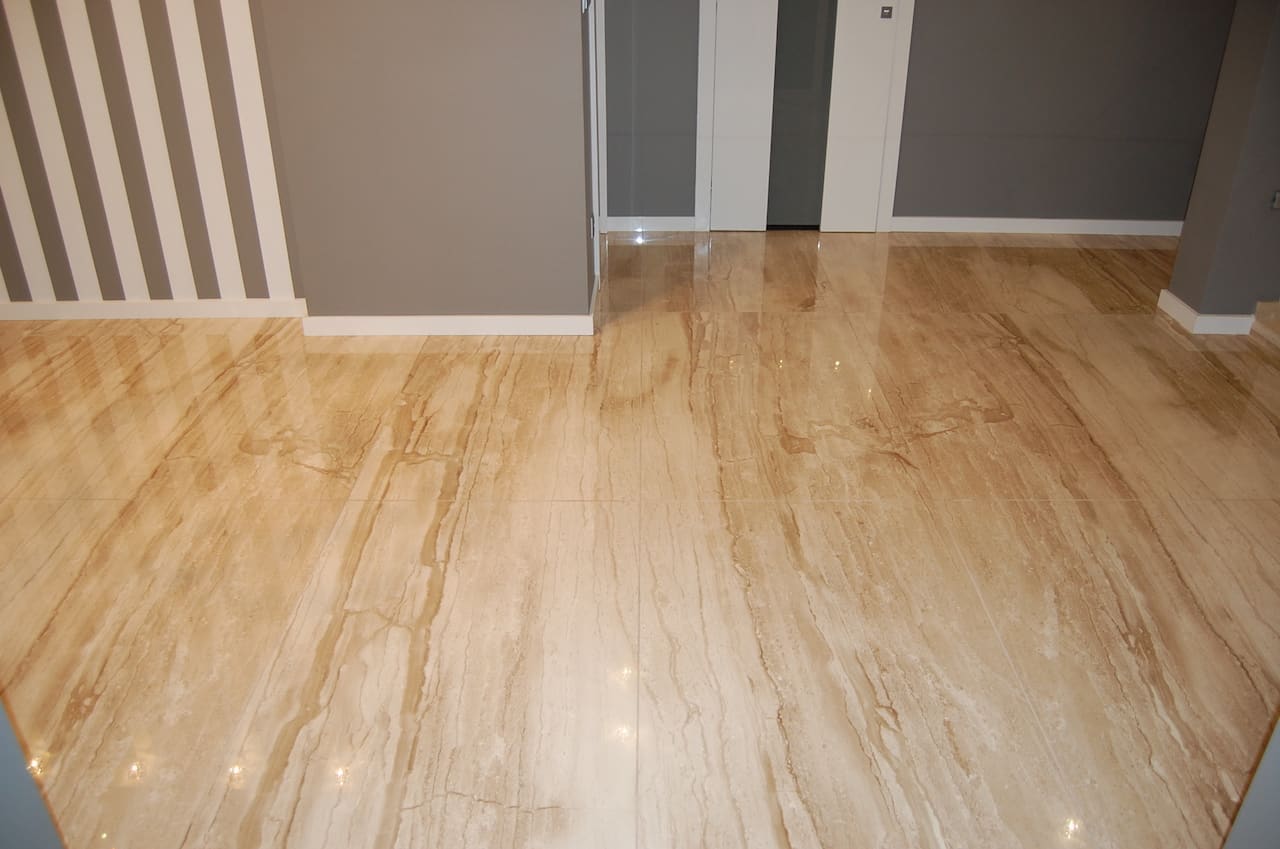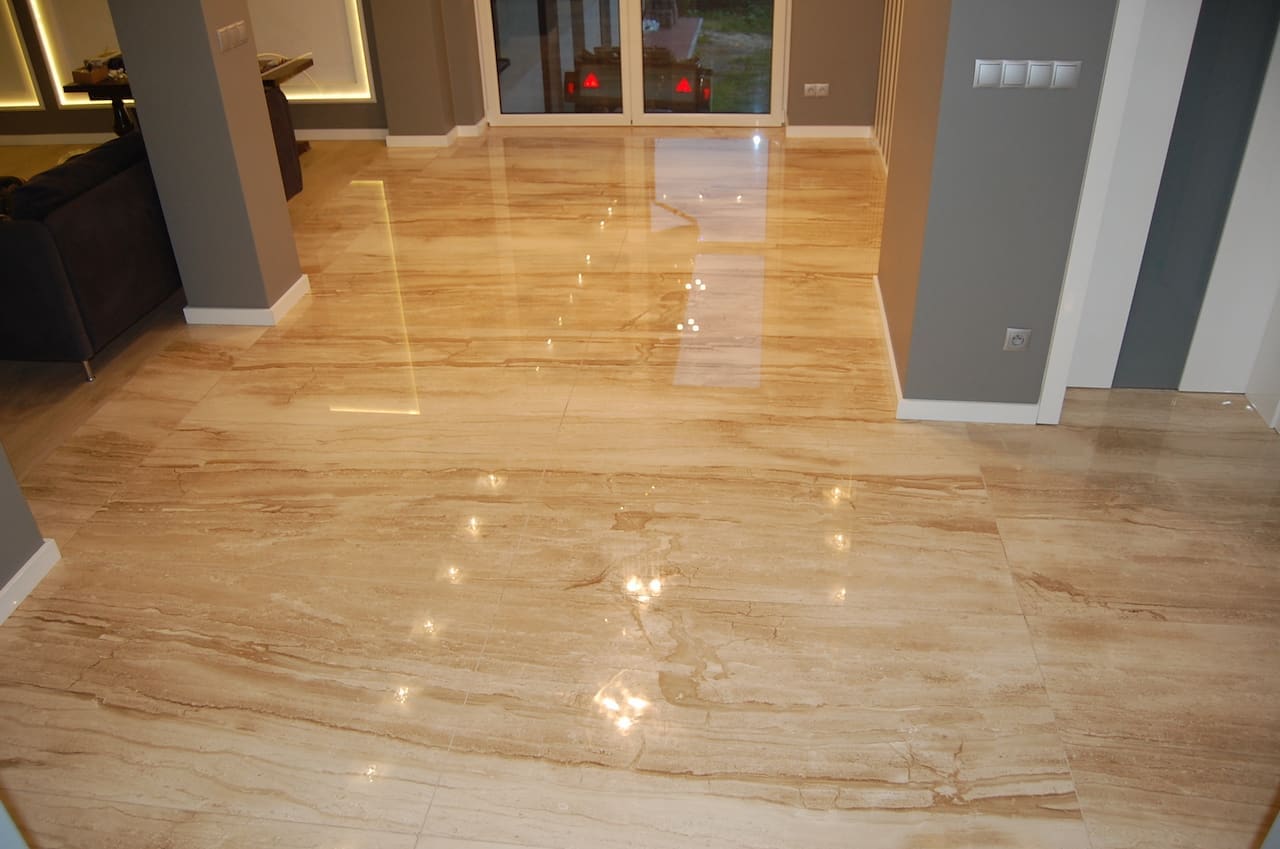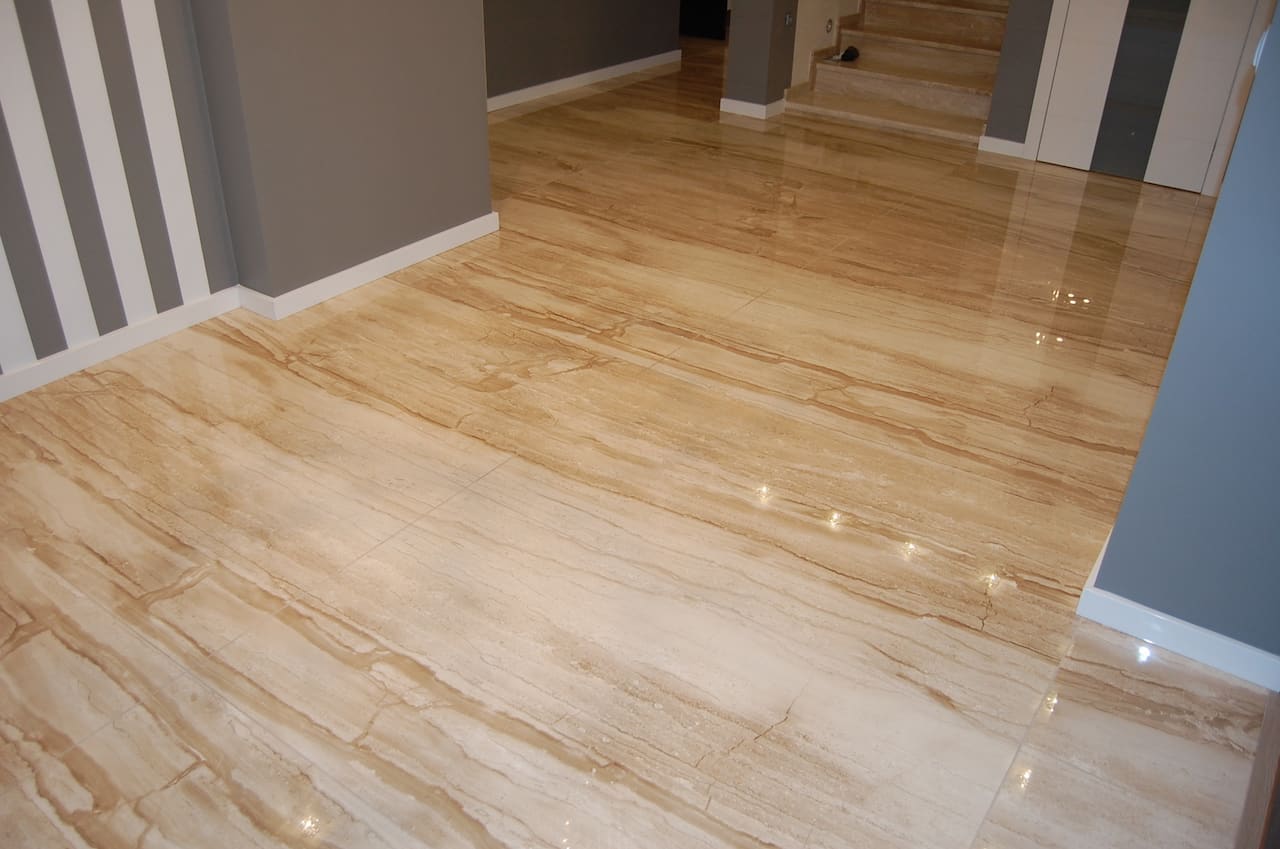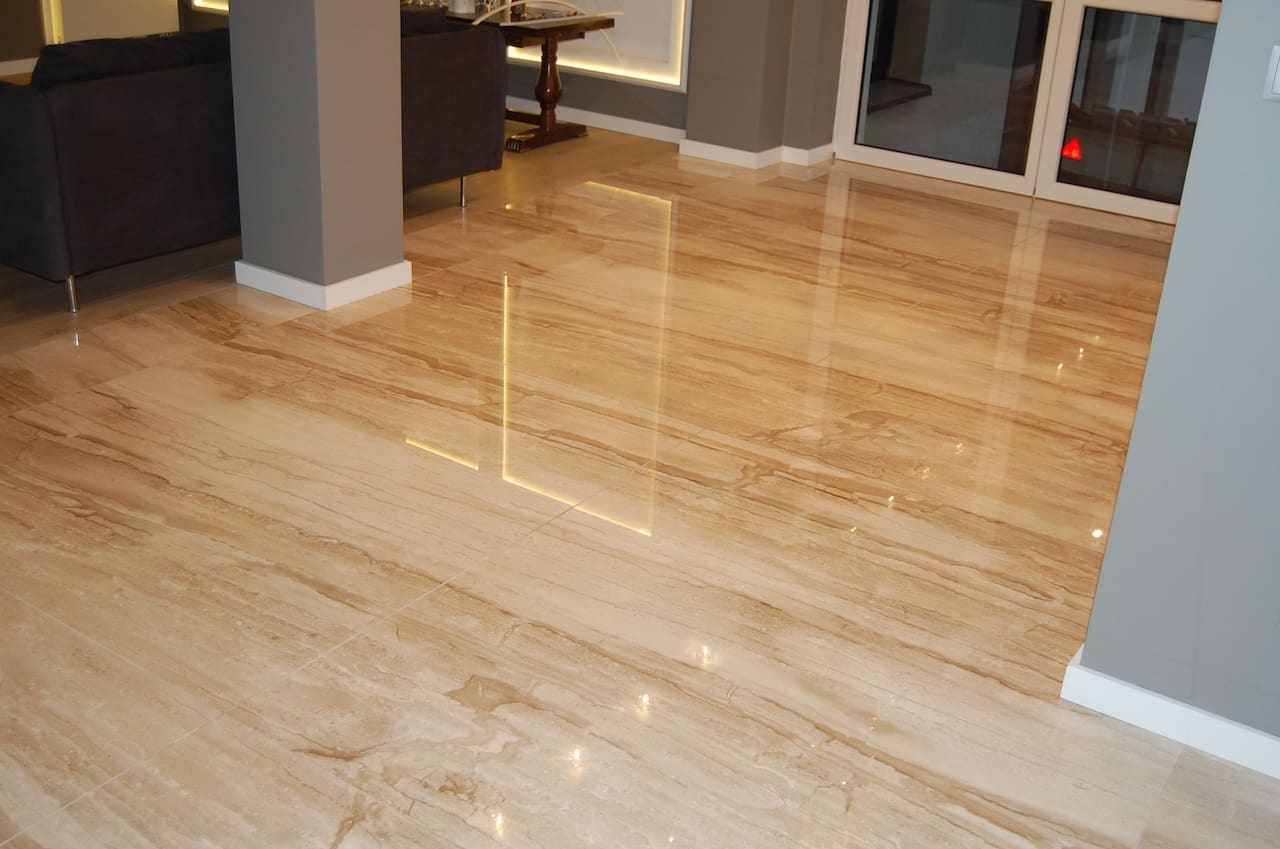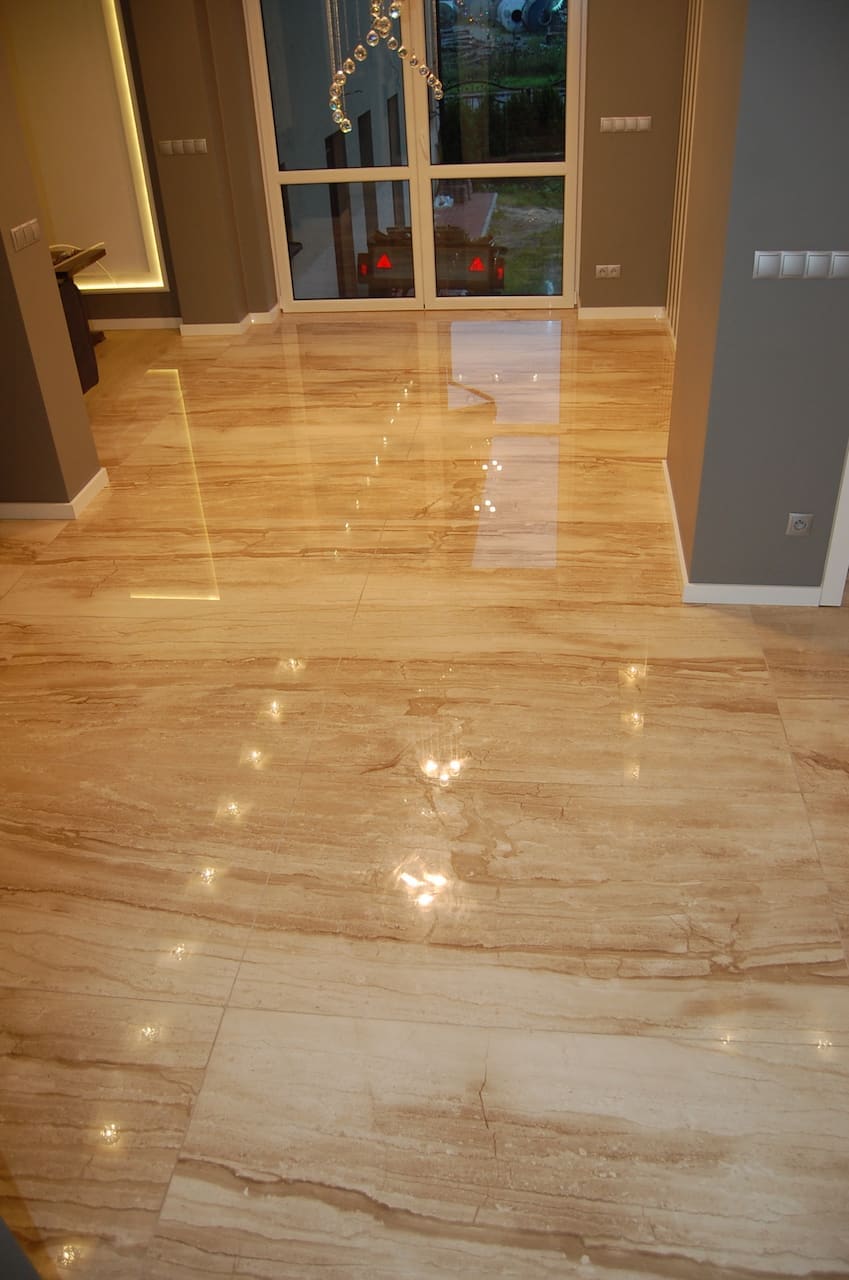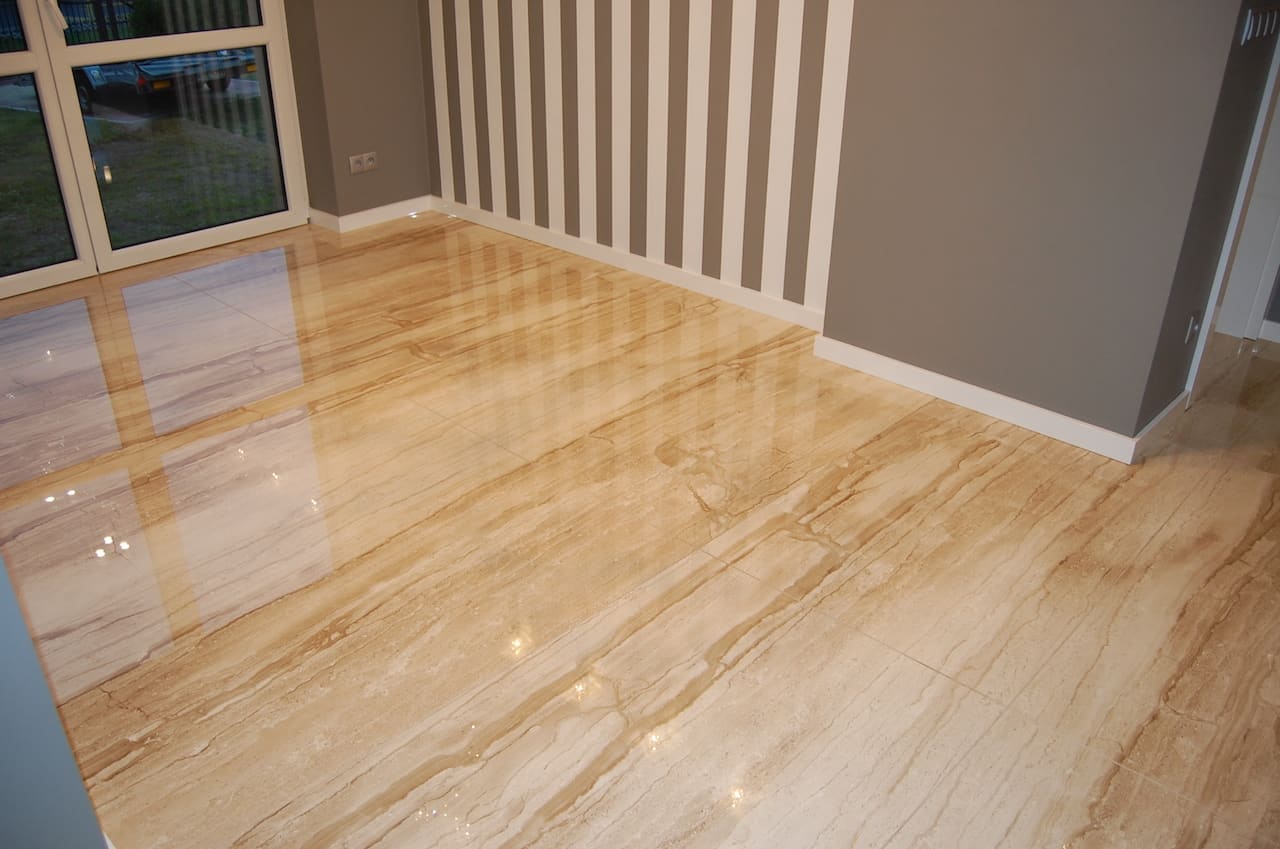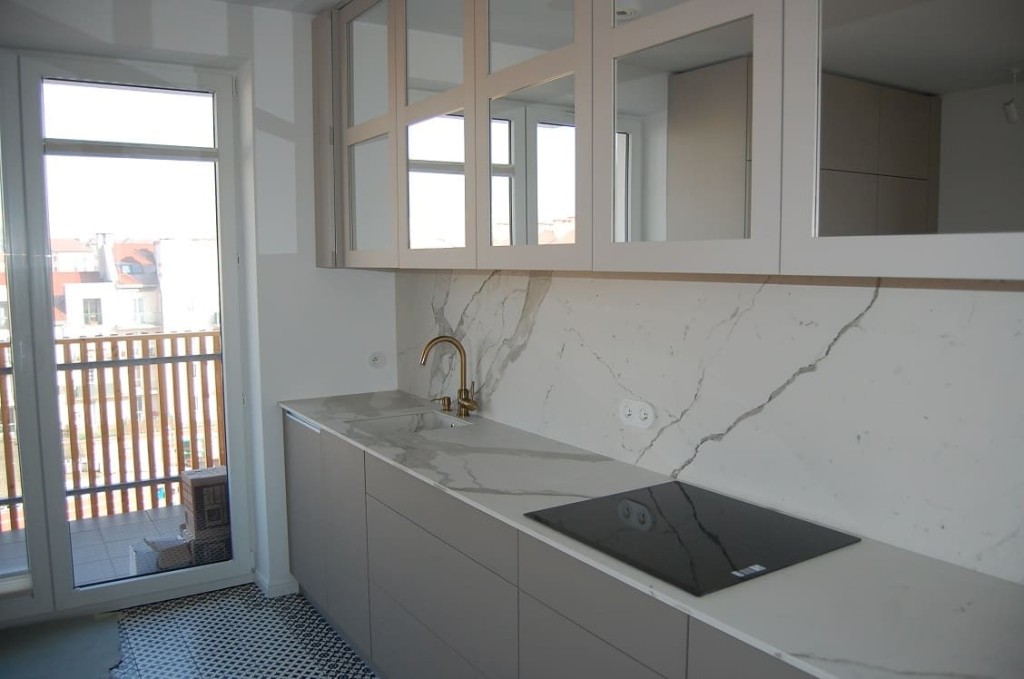Is stone a better solution than ceramic tiles?
Stone flooring is a timeless, durable and long-lasting solution. You might think, that purchasing stone for you floor would be the only and the best choice. However, there are different kinds of flooring available on the market and stone floors are not the only solution.
Stone flooring
Stone floor is a timeless, elegant and first of all durable solution. Natural stone has been regarded for many years as one of the most hardwearing materials. Additionally, a stone floor is easy to be kept clean. It does not need applying particularly complex products. If necessary, water with mild detergent will do. It is a great benefit for all ladies of the house, who want their floor always to be clean and shiny. Stone floors are more expensive than ceramic ones, yet it is worth paying more to enjoy a beautiful view of our floor for many years ahead.
With time, stone floors are getting more and more matt and/or they can undergo the process of abrasion. It does not pose a serious problem, though. Stone floors can be renewed by means of specialist equipment or proper household chemicals. Stone floors are ideally suited for sitting rooms, halls or bathrooms, and their colour or pattern depend on the stone applied
Which stone to select for laying floors?
We have already written in our previous article about what kind of stone to choose. This time, we would like to pay your attention to the fact that not every stone is suitable. When buying stone for your floor, you should particularly remember what it should be characterised by:
High abrassion resistance, which defines the extent to which a stone tile changes its appearance caused by frequent use. It is one of the most important parameters, a stone floor should have.
A stone floor has to be resistant to abrasion especially if we walk on it and our children run and play on it. Another important feature is low moisture absorption, which depends on stone’s porosity, the properties of enamel and the degree of stone absorption with impregnant. What’s important, the lower the absorption is, the less susceptible stone floors are to dirt and discolouration.
Ceramic flooring
Ceramic floors are becoming more and more popular. They are produced from clay with the addition of sand and other ingredients. Ceramic floors are commonly used as kitchen and bathroom flooring. They are distinguished by their high durability and resistance to abrasion. What’s more, you can easily remove even greasy stains from their surface. Ceramic floors are definitely cheaper than the stone once, so they will not exceed your home budget too much.
What distinguishes a stone tile from a ceramic one?
A stone tile, apart from being more expensive than a ceramic one, has different structure. The first one is thicker than the latter one – it is usually from 1 to 2 cm thick, which has on impact on the way they are laid down on the floor. While choosing floor tiles, you should also bear in mind the material they are made of has an effect on the safety of their users. Some floors which are polished to leave the surface smooth and shiny become slippery when damped. However, you should be aware that a stone floor is first and foremost the investment in the quality incomparable with any other man-made material. They can be used almost everywhere. They are the synonym of luxury and elegan
How to lay down flooring?
If you want to install a stone or a ceramic flooring on you own, you will have to prepare yourself accordingly otherwise the tiles may come off the surface, and you will have to repeat the whole procedure again. The whole process starts with a proper preparation of a level subfloor. It has to be compact and floating. If it is too absorbent, it needs to be primed with a special primer emulsion. Next, we need to choose the mortar for our flooring – before its purchase, you have to pay special attention to its parameters. Having all our tools prepared, we go on to lay down the tiles. This process has to be divided into a few stages:
Laying the groundwork
Applying the glue
Laying down the tiles
Grouting
Ways of laying down the tiles:
There are a few ways of laying down tiles, which can be mixed thus achieving very interesting final effects.
Grid pattern – the simplest pattern, the grout lines are parallel to the edge of the floor surface, forming “crosses”
Diagonal grid pattern – the grout lines are placed at 45° against walls
Staggered grid pattern – every second row of tiles start at the center of the tile below it
Flemish bond pattern – big tiles laid down together with the small ones


